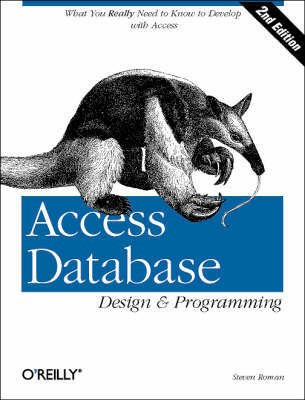Access Database Design & Programming(English, Book, Roman Steven)
Quick Overview
Product Price Comparison
When using software products with graphical interfaces, we frequently focus so much on the details of how to use the interface that we forget about the more general concepts that allow us to understand and put the software to effective use. This is particularly true of a powerful database product like Microsoft Access. Novice, and sometimes even experienced, programmers are so concerned with how something is done in Access that they often lose sight of the general principles that underlie their database applications. This text, an update to the bestselling first edition, features: a discussion of Access' new VBA Integrated Development Environment, which is the one used by Word, Excel, and PowerPoint; an expansion of the discussion of the VBA language itself, in response to reader requests; a discussion of Microsoft's latest data access technology, called Active Data Objects (or ADO), along with a discussion of Open Database; and Connectivity (ODBC), which is intimately connected with ADO. The book focuses on the core concepts, enabling programmers to develop solid, effective database applications.As a result, important topics such as designing forms and reports, database security, database replication, and programming for multiuser applications are simply not discussed. This book is a kind of "second course" in Access that provides a relatively experienced Access user who is new to programming with the frequently overlooked techniques necessary to successfully develop in the Microsoft Access environment. Although this book is really an introduction targeted at intermediate Microsoft Access users who are novice programmers, it should appeal to all levels of Access developers. For novice programmers, it focuses on a key body of knowledge that is typically neglected, but is nevertheless essential for developing effective database applications. For intermediate and advanced developers, its treatment of database design and queries provides a handy treatment that otherwise has to be gleaned from relatively uninteresting textbooks, while its programming chapters constitute a handy reference to some basic operations that can be performed using DAO or the Access object model.


